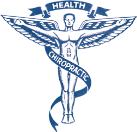






















The doctor of the future will give no medication, but will interest his patients in the care of the human frame, diet and in the cause and prevention of disease
~Thomas Edison
Services |


101 West Church St
Suite 3, Ukiah CA
(707) 367-

Dr. Christine Miller DC


Frequently Asked Questions
- What's Wrong With Me?
- Can Chiropractic Help Me?
- What Conditions Do Chirpractors Treat?
- Is Chiropractic Treatment Safe?
- Is Chiropractic Treatment Appropriate For Children?
- What Type of Education and Training Do Chiropractors Have?
- How Long Will It Take?
- How Much Will It Cost?
- Do I Have To Keep Coming Back For Treatments?
- Are Chiropractic Treatments Safe and Do They Hurt?
- Why is There a Popping Sound When a Joint is Adjusted?
What's Wrong With Me?
Accurately identifying the cause of spinal pain or other discomfort almost always requires a thorough consultation and examination. Individuals should not assume their pain stems from the same problem, for example, their neighbor had, and thus what has helped their neighbor will help them. Just as every individual is unique and different from the next, so too are the health conditions they suffer and the treatments they require.
Chiropractic doctors are highly trained in the diagnosis and treatment of soft tissue injuries and abnormalities common to the spine, extremities and rest of body. Rest assured that if you are suffering from back or neck problems, extremity problems or other health related ailments chiropractic can provide you with the effective professional relief you demand. If your condition is out of the chiropractic scope or would be more appropriately managed by another health care specialist, we will gladly and promptly make the necessary referral.
Can Chiropractic Help Me?
Chiropractic has helped millions of people worldwide suffering from all types of problems and not just back and neck ailments. Chiropractic works with the spinal column and it's intimate relationship with the nervous system -
You may be surprised to learn that research studies have provided scientific evidence showing chiropractic care is not only effective in the treatment of back and neck ailments, but can also provide effective relief with children suffering from ear infections, women suffering from dysmenorrhea (painful menses), and a number of other seemingly "non-
Of course, doctors of chiropractic are best known for their success in treating back and neck problems. Through the use of chiropractic spinal adjustments and other highly specialized chiropractic techniques, chiropractors have established themselves as the back and neck injury specialists. Many medical experts are now coming to understand the true effectiveness of chiropractic care and are recommending major changes in the way our health care system manages many common spinal problems. According to a recent Ontario Ministry of Health commissioned study on low-
"A very good case can be made for making chiropractors the gatekeepers for management of low-
What conditions do chiropractors treat?
Doctors of Chiropractic (DCs) care for patients of all ages, with a variety of health conditions. DCs are especially well known for their expertise in caring for patients with back pain, neck pain and headaches...particularly with their highly skilled manipulations or chiropractic adjustments. They also care for patients with a wide range of injuries and disorders of the musculoskeletal system, involving the muscles, ligaments and joints. These painful conditions often involve or impact the nervous system, which can cause referred pain and dysfunction distant to the region of injury. The benefits of chiropractic care extend to general health issues, as well, since our body structure affects our overall function. DCs also counsel patients on diet, nutrition, exercise, healthy habits, and occupational and lifestyle modification.
Is chiropractic treatment safe?
Chiropractic is widely recognized as one of the safest drug-free, non-invasive therapies available for the treatment of neuromusculoskeletal complaints. Although chiropractic has an excellent safety record, no health treatment is completely free of potential adverse effects. The risks associated with chiropractic, however, are very small. Many patients feel immediate relief following chiropractic treatment, but some may experience mild soreness, stiffness or aching, just as they do after some forms of exercise. Current research shows that minor discomfort or soreness following spinal manipulation typically fades within 24 hours.
Neck pain and some types of headaches are treated through precise cervical manipulation. Cervical manipulation, often called a neck adjustment, works to improve joint mobility in the neck, restoring range of motion and reducing muscle spasm, which helps relieve pressure and tension. Neck manipulation, when performed by a skilled and well-
Some reports have associated high-
If you are visiting your doctor of chiropractic with upper-
Doctors of chiropractic are well trained professionals who provide patients with safe, effective care for a variety of common conditions. Their extensive education has prepared them to identify patients who have special risk factors and to get those patients the most appropriate care, even if that requires referral to a medical specialist.
Is chiropractic treatment appropriate for children?
Yes, children can benefit from chiropractic care. Children are very physically active and experience many types of falls and blows from activities of daily living as well as from participating in sports. Injuries such as these may cause many symptoms including back and neck pain, stiffness, soreness or discomfort. Chiropractic care is always adapted to the individual patient. It is a highly skilled treatment, and in the case of children, very gentle.
What type of education and training do chiropractors have?
Doctors of chiropractic are educated as primary-contact health care providers, with an emphasis on diagnosis and treatment of conditions related to the musculoskeletal system (the muscles, ligaments and joints of the spine and extremities) and the nerves that supply them. Educational requirements for doctors of chiropractic are among the most stringent of any of the health care professions.
The typical applicant for chiropractic college has already acquired nearly four years of pre-
Because chiropractic care includes highly skilled manipulation/adjusting techniques, a significant portion of time is spent in clinical technique training to master these important manipulative procedures.
In total, the chiropractic college curriculum includes a minimum of 4,200 hours of classroom, laboratory and clinical experience. The course of study is approved by an accrediting agency that is fully recognized by the U.S. Department of Education.
How Long Will It Take?
While treatment lengths vary somewhat from person to person and from condition to condition, there are a few rules of thumb you can follow.
First, newer injuries, if treated appropriately and immediately, tend to respond to fewer visits assuming that major tissue injury has not occurred. Many of these first time injuries can be effectively managed in as little as 3 to 4 visits. Conditions that have been present for greater than 3 months and recurring conditions are generally more stubborn and difficult to manage. Resolution may require 12 visits or more.
The only sure way to determine how long your treatment will take is to schedule a consultation and/or examination.
For those of you who believe in just waiting for the problem to "go away" on it's own -
How Much Will It Cost?
Costs vary and generally depend on the number of treatments required to effectively treat your condition. A number of studies have shown that chiropractic care is extremely cost effective when compared to other "medical" forms of care for similar conditions. According to the 1993 Manga Report,
"There would be highly significant cost savings if more management of low-
Do I Have To Keep Coming Back For Treatments?
You may have heard the notion that once you go to a chiropractor you have to keep going back. Before we answer that question, ask yourself how many times you have visited a dentist? Like most people, you've probably gone dozens of times. Why? Quite simply, to prevent your teeth from literally rotting out of your head.
Once we have eliminated your pain and rehabilitated the injured tissues we do recommend that you maintain a schedule of periodic spinal checkups. Like your dentist and like many of the medical experts are now recognizing, prevention is the key to reducing recurrences of existing health conditions and minimizing new injuries in the future.
So the answer is yes, we want you to keep coming back, but just periodically. Periodic chiropractic care minimizes spinal and nerve stresses, reduces recurrences of old injuries, prevents new injuries from developing, minimizes degenerative processes, which enhances overall health and wellness.
Are Chiropractic Treatments Safe and Do They Hurt?
Chiropractic treatments are extremely safe for individuals of all ages -
The treatments themselves are generally not painful. In fact, most patients look forward to their treatments as many experience instantaneous relief immediately afterwards. Individuals who present with moderate to severe pain may experience some minor discomfort for obvious reasons, however, care is always gentle, safe and noninvasive.
Why is there a popping sound when a joint is adjusted?
Adjustment (or manipulation) of a joint may result in the release of a gas bubble between the joints, which makes a popping sound. The same thing occurs when you “crack” your knuckles. The noise is caused by the change of pressure within the joint, which results in gas bubbles being released. There is usually minimal, if any, discomfort involved.
Having subluxations is like having poor cell phone reception between your brain & body